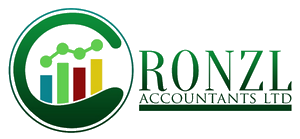Starting anything new can be very daunting, so a lot of taxpayers always want to know the tax consequence of starting a new business.
In this blog post, we will explain five things that you need to do start when starting a new business in the UK.

Request for a P45 from your employer after leaving the employment.
A P45 is a 3-page document that is given to you when you leave an employed job during the tax year. Please note that the tax year in the UK runs from April 6 to April 5.
The reason why it’s important that you receive a P45 is that until it’s issued, you will continue to be treated as still employed.
Choosing the best structure to set up your business.
There are different options available for setting up a business.
You can either operate your business as a sole trader, in a partnership, a limited company, a charity or charitable organization, a limited partnership, etc
One of the structures of setting up a business is explained below:
Running a business as a Sole Trader.
One of the options of the structure of setting your business is as a sole trader.
A sole trader or self-employed individual registers with the HMRC to set up their business.
Although its one of the simplest ways of setting up a business in the UK, it still has some compliance requirements from the sole trader.
After your business has been set up with the HMRC, you are required to do the following  on a yearly basis.
on a yearly basis.
The business and the owner are the same therefore there won’t be a need to register a limited company to trade.
- As stated above you as the new owner of the business are required to register with the HMRC under the self-assessment regime. The deadline for registration is 6 months after the end of the tax year they started trading.
For example, Jake started his new business on January 1st, 2022, and is required to register with the HMRC by the 5th of October 2023.
- You will be required to prepare your account and submit a self-assessment returns yearly
- The deadline for submitting self-assessment returns is January 31st after the tax year ends or the 31sts of October if you are submitting a paper version.
- The deadline for paying taxes is the 31st of January after the deadline.
How is the tax of sole traders’ income is calculated?
The tax paid by the sole trader is computed by deducting sales from expenses incurred in the business.
The sole trader pays tax on net profit over £12,570 for the tax year 2022/23.
Also, the taxpayer always pays two types of national insurance, Class 2 and Class 4
During the tax year 2022/23, a sole trader will only pay Class 2 national insurance if their profit is more than £6,725 in a tax year.
The Class 2 national insurance is calculated based on weeks for trading in a tax year.
The weekly rate for Class 2 national insurance in 2022/23 is £3.15.
Class 4 national insurance is paid by the sole trader when the profit earned in 2022/23 is from £9,881 – to £50,270.
The rate for class 4 national insurance is 9% of the profit over the threshold.
Any profit that goes over this threshold stated above, the taxpayer would pay an extra 2% on the difference.
Do you need a business bank account or not?
It’s not compulsory to have a business account if you are trading as a sole trader.
However, it’s good practice to open a business account or use a different bank account while trading.
Record keeping and accounting
Cash basis:
When the sole traders’ turnover is below the VAT threshold (£85,000 for the tax year 2022/23), they can use a cash basis which allows them to account for transactions when cash is received or paid.

Travel:
A sole trader can either claim a flat rate for mileage at 45p per mile when they use the cash basis accounting or deduct the actual motor expense however private travel will be disallowed.
Business Records:
The records would be kept for 6 years after the tax year that it was used in a return.
Wages of sole trader:
If the sole trader pays wages to himself during the tax year, the wages would be disallowed and added back to the profit before tax is calculated.

Capital items
When items of a capital nature are bought, the expense should be disallowed and added back into the profit earned in the tax year.
Consequently, if the purchase meets certain conditions, Capital allowance can be claimed as a relief.
If you would like more advice on how to set up your business you can contact us or if you would like to read more you can click
